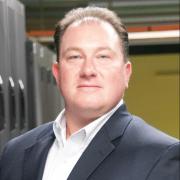Data Center Efficiency
Going green continues to grow in popularity as many companies and industries look to adopt “green,” eco-friendly policies in the workplace. The data center industry is no different. Colocation providers will need to modernize and become more energy efficient as requirements, and expectations for green facilities continue to grow. Data centers are one of the fastest-growing consumers of electricity in industrialized countries and one of the key drivers behind the construction of new power plants in the U.S. In 2013, data centers in the United States used an estimated 91 billion kilowatt hours of electricity. This consumption rate is expected to increase to 140 billion kilowatt hours by 2020, which would cost American businesses $13 billion per year in electrical bills and produce nearly 150 million metric tons of carbon pollution, according to VMTurbo’s Earth Day initiative report.
These are alarming numbers, so what can we do? The Data Center Efficiency Assessment report from the Natural Resources Defense Council (NRDC) notes that server underutilization is the largest problem area in data centers consumption of power. Increasing utilization could reduce data center electrical consumption by 40 percent and would save $3.8 billion per year and 39 billion kilowatt hours annually. Those, too, are alarming numbers.
Here are 4 technologies Expedient employs to help increase data center efficiency:
Cloud Computing – Increasing virtualization across servers can help alleviate the over-consumption of electricity. By utilizing Expedient’s virtual services, users only need to purchase the computing resources required to run applications, instead of acquiring hardware that quickly becomes obsolete. In addition, Expedient’s virtual platforms are built with N+2 redundancy to ensure high availability and 100 percent uptime. At Expedient, we architect and monitor the servers within our virtual platform to reach the best efficiency. We are able to run multiple customers on the virtual platform, which maximizes the underlying physical infrastructure while also consuming less electricity. Our Solutions Architects are vital to assessing and establishing the best architecture, and virtual configuration by working with customers to plan out their project and only employ resources they need versus overinvesting now in resources they may need in the future.
Burstable Virtual Colocation – A burstable model allows customers to scale up and down as needed by purchasing a committed amount of memory on Expedient’s platform, and with that committed purchase, they receive an equal amount of burstable memory space. Your environment can scale up to meet your business needs, from disaster recovery or end-of-month processing to developing environments or patch testing.
Load Balancing – Shared network load balancing gives customers the ability to split network traffic between servers (typically web servers). Network and server load balancing allows for applications to use redundant servers to prevent single points of failure and distribute traffic evenly. Distributing traffic evenly through the use of server and network load balancing can increase reliability, while providing high availability and scalability. This helps with server utilization, especially when optimizing performance during peak periods. Data Center Infrastructure - Hot row/Cold row – Utilizing this setup allows data centers to keep their room temperature fairly unchanged and to maximize their cooling efficiency. Venting the heat away from servers avoids fluctuations in temperature therefore keeping energy use steady.
The Future
It is noted in the NRDC report that data center energy efficiency s increasing but its adoption rate is decreasing. As more data moves back and forth with the explosion of the Internet of Things, data centers will be tasked with needing to be more operationally efficient and, therefore, energy efficient; so, look for modernized technologies to be implemented in future years.
